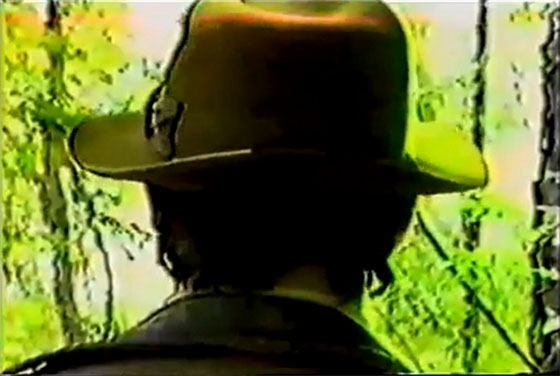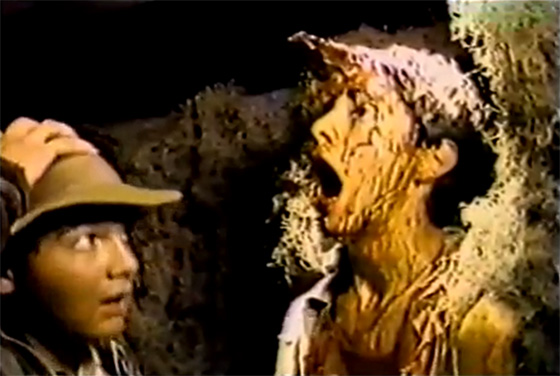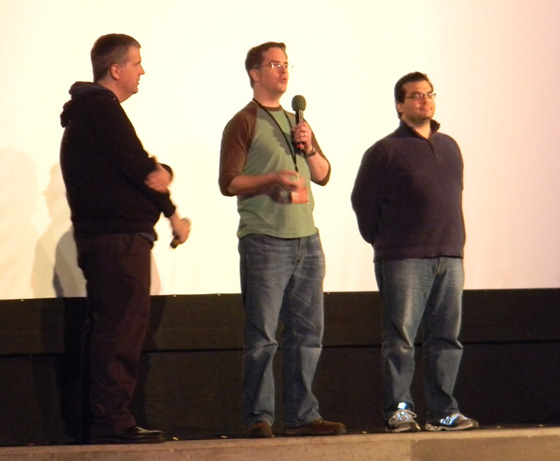 When I was in high school, I was tasked with creating a video for U.S. History class. My friend and I treated it as though we had been commissioned to make a short film for the Oscar telecast. We collaborated upon a script which must have run to thirty or forty pages, a time travel story roughly parodying Quantum Leap, and stringing together various comedy sketches set in different points in American history. But my friend kept inserting large swaths of dialogue from his favorite movie, The Princess Bride. Our final climactic scene was nothing but the Wallace Shawn poison scene from said film. I wanted our script to be more original, but in the interests of friendship and collaboration, kept my opinion to myself. During the shooting of that scene – I should mention that every setpiece, including the Civil War battle, took place in his basement since it rained that day – I couldn’t help but notice that my friend, on-camera, started to mouth the Wallace Shawn dialogue being spoken by his fellow actor. He couldn’t help it; his lips just started moving, with a big grin on his face. That was difficult to try to edit out of the final cut; I had to settle for layering a giant black vertical bar over the portion of the screen he occupied on each occasion that he started moving his lips. I needn’t have been too concerned, because when we showed our video to the class, that scene was the most popular. Everyone recognized it, so everyone liked it. All my classmates just really, really liked The Princess Bride, and my friend’s tribute – and the reaction it received – was nothing but an unfiltered adolescent expression of that love. Such is the case of Raiders of the Lost Ark: The Adaptation (1989), only its young filmmakers took their movie love to an entirely different level.
When I was in high school, I was tasked with creating a video for U.S. History class. My friend and I treated it as though we had been commissioned to make a short film for the Oscar telecast. We collaborated upon a script which must have run to thirty or forty pages, a time travel story roughly parodying Quantum Leap, and stringing together various comedy sketches set in different points in American history. But my friend kept inserting large swaths of dialogue from his favorite movie, The Princess Bride. Our final climactic scene was nothing but the Wallace Shawn poison scene from said film. I wanted our script to be more original, but in the interests of friendship and collaboration, kept my opinion to myself. During the shooting of that scene – I should mention that every setpiece, including the Civil War battle, took place in his basement since it rained that day – I couldn’t help but notice that my friend, on-camera, started to mouth the Wallace Shawn dialogue being spoken by his fellow actor. He couldn’t help it; his lips just started moving, with a big grin on his face. That was difficult to try to edit out of the final cut; I had to settle for layering a giant black vertical bar over the portion of the screen he occupied on each occasion that he started moving his lips. I needn’t have been too concerned, because when we showed our video to the class, that scene was the most popular. Everyone recognized it, so everyone liked it. All my classmates just really, really liked The Princess Bride, and my friend’s tribute – and the reaction it received – was nothing but an unfiltered adolescent expression of that love. Such is the case of Raiders of the Lost Ark: The Adaptation (1989), only its young filmmakers took their movie love to an entirely different level.

Indiana Jones (Chris Strompolos) learns the fate of his companion.
Beginning in 1982, just one year after Raiders was released, Mississippi elementary school acquaintances Eric Zala and Chris Strompolos – who met over their shared love of all things Indiana Jones – decided to collaborate on something the world really needed: a shot-for-shot remake of Spielberg’s film. They ran out of summer, and had to use the next – and the next, and the next, not completing the film for another seven years, at which point it ran only about 10 minutes shorter than the original (they skipped the Jones vs. Nazi airport runway fistfight). They couldn’t be entirely blamed for getting some of the compositions wrong, or missing a few shots or lines here and there: the film was begun in the early years of home video, with the script initially written from memory – a cassette recorder was smuggled into a Raiders screening for greater dialogue accuracy, though eventually the published screenplay and the laserdisc made these efforts unnecessary. All the young actors age visibly, plowing straight through the awkward years of adolescence in 100 minutes. But the young crew accomplished their goal, and the film had its premiere at the PepsiCo Auditorium in Gulfport, Mississippi in the summer of ’89. Zala (Belloq), Strompolos (Jones), their third co-conspirator, a makeup and prop whiz named Jayson Lamb, and a bevy of random schoolmates of varying sizes and ages had made a surprisingly entertaining Bizarro-world version of the greatest action movie ever made.

At the 2012 Wisconsin Film Festival, programmer Jim Healy (L) interviews director Eric Zala (Center) and star Chris Strompolos (R).
Just what makes The Adaptation so entertaining is the audience’s over-familiarity with the original film: as soon as the opening credits sequence is done (this clip is available on YouTube), you realize just how resourceful and imaginative these young kids are, and you can’t wait to see how they’re going to handle the next scene. If they can recreate the giant boulder-chase so impressively, how are they going to tackle the bar fight in Nepal? (Answer: by decorating a basement with empty beer bottles and then recklessly setting it – and, at one point, stuntman Zala – on fire; the boys’ mothers temporarily shut down production when they saw the footage.) Where are they going to get a spider monkey for the Cairo scenes? (Answer: a dog that doesn’t mind being held aloft on the actors’ shoulders.) Will Angela Rodriguez, the pretty girl playing Marion, go through with the kissing scene? (Answer: yes, and multiple retakes led to a makeout session.) How will they pull off the truck chase? (Answer: with ingenuity and just a few injuries.) Not long after its premiere, the teens – who’d had their personal ups and downs with one another over the years – parted ways. But then, unexpectedly, a copy of the VHS got into the hands of filmmaker Eli Roth, who convinced Harry Knowles to program it into his annual “Butt-Numb-a-Thon” in Austin. The audience went nuts. Word spread across the internet. Vanity Fair wrote a beautiful, in-depth article on the history of the film and the coming-of-age turmoil behind the scenes. It wasn’t long before copies reached Spielberg and Lucas, who loved it. Spielberg watched it twice, and wrote a letter of appreciation to Zala and Strompolos stating that the film inspired him. The filmmakers, now in their 30’s, were invited to Skywalker Ranch and Amblin Studios; and now they’ve started a production company and are finally pursuing the dream they’d postponed since adolescence. (They wrote a book about the making of the film, which will be published this November.) They tour the country with The Adaptation – and came to this past weekend’s Wisconsin Film Festival in Madison, where a packed house, including many kids, went wild for a feature-length home movie made in Mississippi in the 80’s. This kind of movie love is nothing to be ashamed about.









